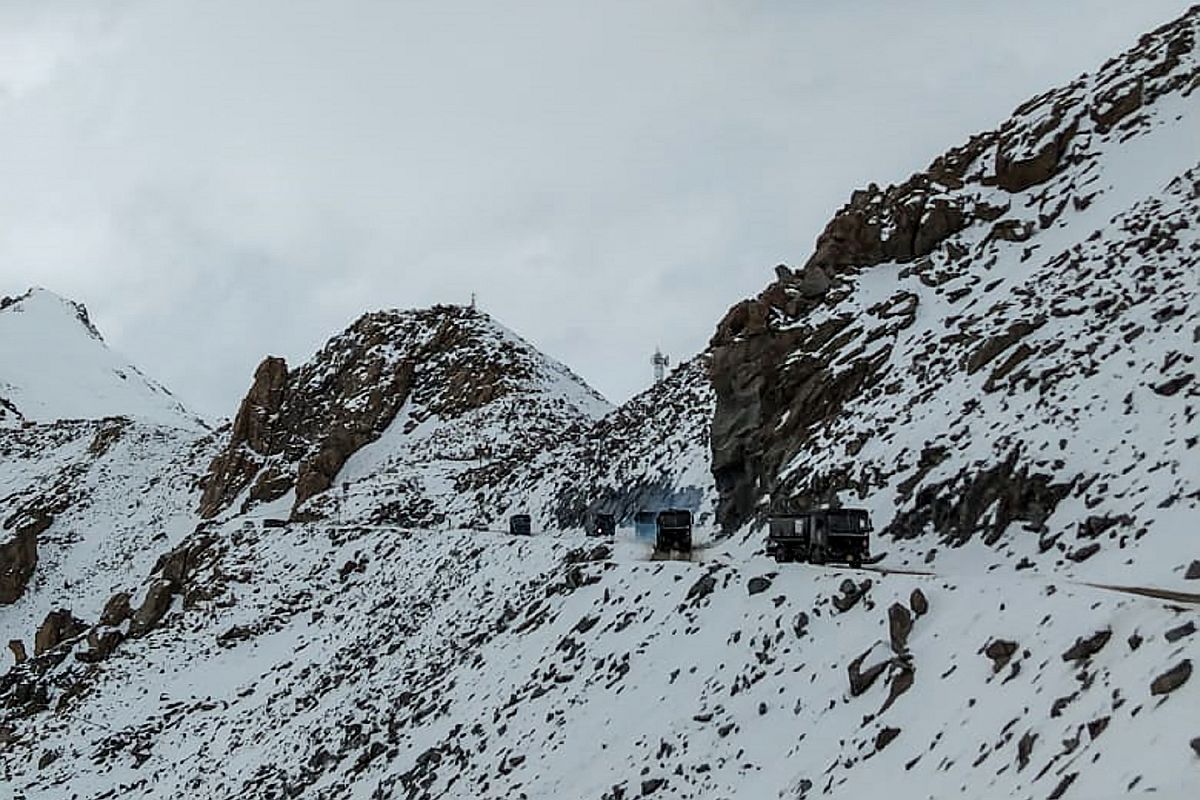In the wake of Chinese troops not complying with the roadmap for a complete pullback along the Line of Actual Control in eastern Ladakh, India on Thursday forcefully reiterated that it will not accept any unilateral attempts to change the status quo along the border with China.
“India is fully committed to observing and respecting the LAC and that we will not accept any unilateral attempts to change the status quo along the LAC,” Ministry of External Affairs spokesperson Anurag Srivastava said in his weekly briefing.
Speculations are rife that the military-level talks between India and China are running into a stalemate over the LAC issue in Ladakh.
Recalling his June 26 statement, Srivastava said, “I had noted that the conduct of Chinese forces this year, including the deployment of a large body of troops and changes in behaviour, accompanied by unjustified and untenable claims, has been in complete disregard of all the mutual agreements.”
The spokesperson said, “Respecting and strictly abiding by the LAC is the basis of peace and tranquillity in the border areas. Several agreements concluded by India and China since 1993 firmly acknowledge this.”
The two sides, he said, have agreed during the conversation of the Special Representatives to work towards complete disengagement of the troops along the LAC and de-escalation from India-China border areas for full restoration of peace and tranquillity.
“Both sides are engaged in discussions through the established diplomatic and military channels to achieve this objective expeditiously,” Srivastava said.
The maintenance of peace and tranquillity in the border areas is the basis of India-China bilateral relationship, the spokesperson said.
“Therefore, it is our expectation that the Chinese side will sincerely work with us for complete disengagement and de-escalation and full restoration of peace and tranquillity in the border areas at the earliest as agreed to by the Special Representatives,” Srivastava said.
On June 26, India had warned China that trying to alter the status quo on the ground by resorting to force will not only damage the peace that existed along LAC but can also have “ripples and repercussions” in the broader bilateral relationship.
The Ministry of External Affairs had said that China’s repeated incursions into Indian territory this year has been in “complete disregard of all mutually agreed norms”. This came in response to Beijing’s claims that India is to be blamed for June 15 violence at Galwan valley in which 20 soldiers died.
Meanwhile, the disengagement between India and China has reportedly hit a roadblock in eastern Ladakh as Chinese troops have not moved back from the Line of Actual Control (LAC) in line with the consensus arrived at during the military-level talks between both the countries.
Seeing this, the Indian Army is preparing for a long haul and harsh winter in the high-altitude region.
China is reportedly not complying with the roadmap for a complete pullback, which was drawn out during the Corps Commander-level meet on July 14. The Chinese People’s Liberation Army troops have not moved back.
The Indian security establishments said that the Chinese retreated a bit and then returned and therefore, there is a need for “constant verification” of the consensus achieved during the meetings between the Indian and Chinese military delegates.
It has been found that the Indian and Chinese troops have pulled back at Pangong Lake by 2 km and Finger 4 is empty. However, the Chinese are still camping on the ridge line. This clearly indicates that the Chinese had camped at Finger 4 that had traditionally been under the Indian control.
The Chinese had come 8 km into the Indian territory, all the way till Finger 4 from Finger 8. India maintains that the LAC runs through Finger 8. Mountain spurs jutting into the lake are referred to as fingers.
In Galwan Valley, which is called Patrolling Point 14, distance between Indian and Chinese troops is 3 km. At Patrolling Point 15, the distance between troops is around 8 km.
But in Hot Springs, that is Patrolling Point 17, 40-50 troops on both sides are just 600-800 meters apart. The Chinese Army had retreated as per the consensus, but again returned.
Currently, both India and China are engaged in military and diplomatic deliberation to de-escalate the tense situation at the border areas. The countries are locked in a standoff that is over 10-week old, at multiple points, hitherto unprecedented along the border. The tension escalated manifold after 20 Indian soldiers were killed in a violent clash in Galwan valley on June 15.
On July 14, in a marathon meeting that lasted for almost 15 hours, the military delegates of India and China held deliberations on disengagement and de-escalation of troops and materials on their borders in eastern Ladakh along the Line of Actual Control (LAC).
This was the fourth Corps Commander-level meeting between 14 Corps Commander Lieutenant General Harinder Singh and South Xinjiang Military District chief Major General Liu Lin, that took place on the lines of the one held at the Chushul-Moldo border personnel meeting (BPM) point in eastern Ladakh on June 6.
The disengagement process between the two armies in the Galwan valley began on July 6 after a two-month military standoff.
The mutual agreement on disengagement came after a key phone call between Chinese Foreign Minister, State Councillor and Special Representative on the Sino-Indian Boundary Issue Wang Yi and Indian National Security Advisor and Special Representative Ajit Doval on July 5.
Both the countries noted that it was necessary to ensure at the earliest complete disengagement of the troops along the LAC and de-escalation from India-China border areas for full restoration of peace and tranquillity and also agreed that the two sides should not allow differences to become disputes.










